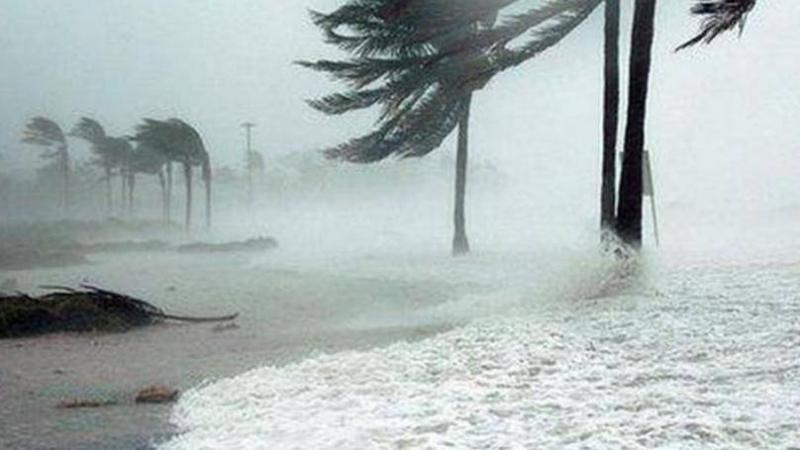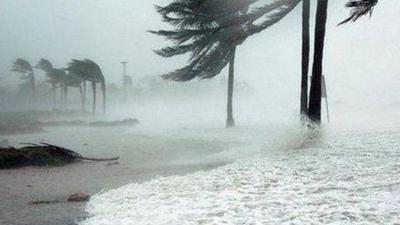In the past two years, Lebanon has become a point of "leakage" for migrants heading to Europe, with over 85 recorded trips in just this year alone. A Lebanese security source states that human trafficking existed before the crisis but was limited and primarily focused on smuggling people into Lebanon. Now, however, things have significantly escalated. Thousands of migrants from Lebanon, Syria, and Palestinians in both countries are literally throwing themselves into the sea in a gamble aimed at reaching Europe, where they dream of a better life. Passengers from 38 boats succeeded in reaching Europe last year, while those on 46 journeys failed. Tragedy struck with the sinking of two boats carrying hundreds fleeing difficult living conditions in their home countries, resulting in some lost at sea and others having their bodies washed ashore.
In the tracking room set up by the Lebanese army to pursue human traffickers, security personnel are meticulously investigating details, collecting testimonies from traffickers and migrants to build a comprehensive picture of the smuggling operations that are relentlessly active from the Lebanese coast. The image painted by a Lebanese security source interviewed by "Asharq Al-Awsat," along with testimonies from many passengers of failed journeys and their relatives, reveals the despair of people who risk their lives and those of their children in perilous journeys, as well as the greed of traffickers who endanger these lives for a handful of dollars, which the passengers scrape together by selling their last possessions to board a trip where drowning is one of the possible outcomes.
All migrant journeys head to Italy, the gateway to the European Union for those fleeing the region. - Why Italy and not the closer Cyprus or Greece? The source explains: "While the route to Italy is longer, more difficult, and riskier compared to nearby Cyprus, which can be seen from Lebanon, or Greece, which is not far from Cyprus, Cyprus has an agreement to prevent human trafficking with Lebanon, so it sends back all migrants to Lebanon, including those sometimes rescued at sea or intercepted in its territorial waters. Greece, on the other hand, deals harshly with migrant boats, but in Italy, the situation is entirely different. Italians assist migrants and provide them with basic services such as food and medical care as soon as they enter their territorial waters, and Italy does not detain migrants, allowing them to move freely within its territory and to other parts of the EU while awaiting court decisions."
Even in Italy, traffickers choose the disembarkation locations, favoring "the tip of the boot," as depicted in the map of Italy, avoiding further regions due to their challenging terrain and "savage inhabitants," as stated by one of those arrested during investigations with Lebanese authorities. The journey to Italy takes between 8 to 10 days, depending on weather conditions, and it can be prolonged due to the boat having to maneuver away from Cypriot and Greek patrols or due to mechanical failures, causing the boat to sometimes remain stationary for days.
When the boat arrives in territorial waters, the captain, using "GPS" and satellite phones, calls for help from the Italian coast guard. Upon receiving a response, he immediately begins to sink the boat to eliminate any evidence that could prove its country of origin and the point of departure, and everyone jumps into the water awaiting the Italian patrols that collect the migrants and transport them to designated gathering areas. In Italy, migrants refuse to provide any identification documents, and the Italian side offers them one of two options: the first is to apply for asylum in Italy and enter the immigration system, where their fingerprints are taken, or they are given a deadline to leave Italian territory, which is the preferred option for more than three-quarters of migrants, who are in contact with relatives or acquaintances in other European countries they wish to go to and settle with their help, whether it be financial assistance or help from relatives.
- Smuggling Scenario
Smuggling locations range from the shores of Tripoli to the border with Syria at Al-Abdeh, making it a playground for traffickers in a vast area difficult to control securely. The smuggling scenario begins with a "broker" who gathers travelers and agrees with them on the trip details and payment, which is made in stages: the first being an upfront payment, and the last one received by the trafficker in Lebanon through relatives or trusted individuals after ensuring the migrant's arrival in Europe. The passenger pays between $4,000 to $5,000, but a special rate is applied for families and groups. Often, homes, gold, or real estate are sold in a gamble; if it fails, they lose all hope. Discounts are provided for children's travel, which has increased their numbers. Passengers report that their payments may include accommodation for one or more nights in Bhbneen while waiting to depart, which is often funded by their own resources. This has opened an additional livelihood opportunity for the residents of Bhbneen, as travelers flock from Lebanese areas, and they are also smuggled from Syrian cities. Thus, collaboration has emerged between land traffickers bringing passengers from Syria and sea traffickers transporting them to Europe.
Rowan Al-Man'a, cousin of the victim Mustafa Musto, confirms that her cousin was lured and persuaded to travel by a friend who turned out to be a relative of the main trafficker Bilal Nadim Dib; he paid $5,000 for each person and an additional $5,000 for his three children—all debts, of which he had no money. Meanwhile, the trafficker has purchased a fishing boat, costing between $35,000 to $50,000, with the last boat that sank off Tartus purchased for $36,000. The ownership is often transferred to one of the travelers, who receives a preferential price or additional passengers from whom he collects money, since the boat owner is likely to face legal action in Lebanon after the journey is revealed, allowing the trafficker to remain “off the radar.”
The boat departs legally from the fishermen’s port, with legitimate identification papers and the driver’s identity, and it undergoes inspection by security forces, who find nothing suggesting migration—no passengers, no large amounts of fuel, no excessive food supplies, and no life jackets. All this equipment is loaded later. Fuel, rescue equipment, and food are stored in homes close to the shore, whose owners receive money from traffickers for "hosting" them. Meanwhile, the passengers are gathered in small boats from various points along the shore to avoid attracting attention. Typically, they carry no luggage, just a few bags or backpacks, like any other day-tripper.
Upon reaching the boat, surprises often begin. The number exceeds expectations. The boat, intended for twenty people, is agreed to be filled with fifty, but upon arrival, the number often swells much higher, as was the case with the last boat that sank off Tartus, which had over 125 people on board. There is a captain, his assistant, a mechanic, and a medic on board, each of whom “hauls” family members with them. Everyone on the boat intend not to return to Lebanon; they are not just traders, but customers as well. This is evidenced by the drowning of family members of the captain of the "death boat," sunk off the Lebanese coast of Tripoli in April, where members of the Palestinian captain Osama Al-Hassan's family died with him.
Overloading increases the risk factor, and when harsh weather intervenes, disasters occur. A similar boat cannot travel faster than two miles per hour, and the greater the load, the higher the added risks, which traffickers often fail to account for—either due to the inexperience of the captain and his assistants or the greed of the traffickers.
The Lebanese army and security forces are trying to combat the phenomenon as much as possible, despite limited manpower and equipment. The security source reveals that 46 smuggling operations were thwarted in 2022, compared to 38 successful attempts, with two boats sinking and one malfunctioning vessel rescued at sea. The last vessel had malfunctioned twice before sinking. The escapees are often similar. The captain shares the goal with the passengers but stands out due to the privileges and influence received from his often armed aides. The traffickers present a different story. The security source states that Lebanese authorities have largely identified the networks operating in smuggling and are attempting to dismantle them as much as possible. The source does not deny the condition of the northern town of Bhbneen, where he claims the residents are usually familiar with the sea, as fishing was their main trade; however, recently things have taken a different turn. Entire families have become involved in smuggling and fleeing. The brother of the arrested Bilal Dib, accused of leading one of the smuggling networks, had left on one of these boats with his family and is now residing in Europe.




